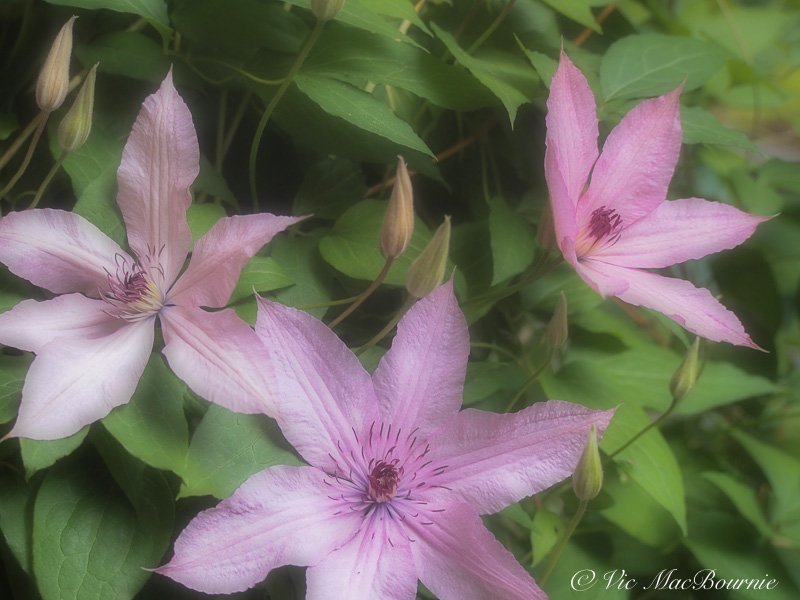Olympus PEN camera delivers sophistication in a stylish package
First impressions of the Olympus PEN E-PL2
Very few camera manufacturers can successfully make retro cool again, while still delivering modern features.
Many of the major brands have tried and failed. Olympus, on the other hand, has never lost the “cool” factor with its PEN series of digital cameras beginning with the PEN E-P1 and running through a series of successful launches to the current E-PL10 model. (See image below)
Not only has Olympus maintained the “cool” factor, it has also introduced a sophistication to their PEN series. There is also something to be said for big performance in a small compact body.
Cool, sophisticated and incredibly capable all wrapped up in an exquisite package that makes you just want to make memorable images.
Looking for more information on Olympus cameras, check out my review on the Olympus E-M10.
This image of a chipmunk was shot with the Olympus Pen E-PL2 with the 40-150mm kit lens.
But the PEN series actually got its start before many of us were likely even born. Its roots trace back to October, 1959, where it began life as an inexpensive, analog half-frame SLR compact camera that enabled photographers to double the output of a typical role of 35mm film.
It remained in the Olympus 35mm film camera arsenal until the early 1980s.
In 2009, Olympus released the PEN E-P1, a digital mirrorless interchangeable-lens camera, and the digital story of the Olympus PEN series began.
If you are looking to add a camera or lens to your arsenal, be sure to check out the huge selection of photography equipment at KEH Camera Exchange.
Today, the E-PL10 sports handsome styling in a compact package that uses a 16 megapixel sensor and impressive 3-axis in-body stabilization, along with a host of features including a flip-down touchscreen display, UHD 4K video capture, 6.1 frame per second burst shooting with continuous autofocus, Wi-Fi plus Bluetooth connectivity and 121-point autofocus system. It’s available in three colours – black, mocha and white – and will set you back abour $600 U.S. for the body only.
More recently the Olympus Corporation’s camera division – including the Digital PEN series – was purchased by Japan Industrial Partners, and is currently run under the name OM Digital Solutions.
The PEN’s compact size, sleek design and impressive feature-packed offering makes it a favourite for advanced amateurs looking for an everyday carry camera that performs like a full-sized near-professional camera.
I was lucky enough to score an older, used PEN-E-PL2 model complete with both kit lenses (14-42mm and 40-150mm) and the impressive fisheye converter (Olympus FCON-P01 Fisheye Converter) for a very reasonable price.
The fisheye converter is a high quality lens attachment made in Japan specifically for the 14-42mm f3.5-5.6 ll MSC lens. It snaps on via a bayonet mount to the front of the 14-42mm lens and is used best at the 14mm end. There is also a scene mode that should be set to get the most out of the attachment.
Olympus states on its website that the fisheye converter “lens attachment allows you to easily take fisheye-style shots. In addition to capturing unique and intriguing shots of pets with a fisheye effect, you can also shoot photos with emphasised perspective when shooting up close since you can get as close to the subject as 7cm from the lens front.
It weighs in at a hefty 112 grams, includes a built-in metal tulip hood and is constructed with 3 elements in 3 groups. Olympus states it is the equivalent of an 11mm lens (22mm in 35mm equivalent). This falls a little short of the angle of view most stand alone fisheye lenses provide, but the fisheye effect works well with the additional width.
Check out this Olympus post for more on getting the most out of your fisheye photography with Olympus cameras.
Although these PEN series cameras are holding their value better than some older digital cameras, they are still available for a fraction of their original price if you take your time tracking down a solid example on Ebay or other online used-camera retailers.
The Olympus E-PL2 is a 12-megapixel Micro Four Thirds system camera with in-body stabilization released in 2011 to sit above the E-PL1 (released in February 2009) in the product line, but beneath the E-P2. If that’s a little confusing it’s because Olympus actually has two PEN lines – a higher end line and a “light” line that is aimed at more novice photographers rather than the solely enthusiast camera consumers. Both used the same sensor, with the E-PL line dispensing of a back control dial opting instead for a wheel and adding a built-in flash.
The E-PL2 was actually the fourth Olympus PEN camera released over a two-year period back in its day.
More importantly, the E-PL2 sported an improved LCD screen over the E-PL1 that increased to 3 inches and a doubling in resolution to 460K dots. A higher ISO rating, face detection AF mode and some variations in the Art Filter modes, as well as a new at the time collapsible M.Zuiko Digital ED 14-42mm f3.5-5.6 ll MSC lens that takes the fisheye attachment as well as two other converters – a wide angle and macro converter. (MSC is a connotation signalling that lens can be zoomed silently for use in video work.)
It also features the Olympus super control panel on the back LCD screen that puts most of your settings in one convenient place. It’s just part of the customization available with the camera that allows users to set the camera up to their liking.
The E-PL2 went through some minor cosmetic changes to give it a more curvaceous look over its predecessors improving ergonomics and giving it a touch more style.
On the back, a blue tooth accessory below the hot shoe –aptly named the Pen pal – allows you to add a small device to transfer your images from the camera to the smartphone.
In addition, an electronic EVF – the VF-3 – can be purchased separately. It sports a high resolution of 920,000 dots, a 100% field of view, long eye relief of 17.4mm, and 90° tilt mechanism. The EVF enables stable framing for outdoor, low-angle, and telephoto shooting and can be found used on EBay and other used-camera outlets.
For a detailed review of the camera specs, check out the extensive review at DPreview.
I’m not interested in getting into the fine details of the camera. That’s the expertise of the people at DPreview (see link above.)
I’m more interested in how the camera performs in the garden, in everyday use and on vacation. First let’s get it out there that although the PEN “light” series is a simplified version of the PEN series, it doesn’t feel like a “light” version. These cameras have a premium feel and touch to them and are no way considered lightweight and flimsy like many cheap point-and-shoot models.
I’ve been using the camera off and on for the past month or two and am thoroughly impressed. Truth be told, I miss the digital viewfinder of my Olympus E-M10, but that aside, the camera and kit lens packages have performed admirably.
The compact size and light weight makes it an easy choice if you just want to grab a few shots in the garden.
Put the camera on Program mode and shoot it like a typical point-and-shoot camera without much thought. Switch it to IA and the camera picks the most suitable program mode to get the shot. Non-photographers will love the convenience of these modes, but if you are looking for a little more control, the camera offers full shutter, f-stop and manual modes.
The selection of “Art filters” can add a nice creative touch to your images, if used judiciously. To add an even more creative approach, there is the ability to shoot double exposures, HDR photography and time lapse exposures.
Not bad for a stylish little camera that can be tucked into a pocket as easily as a purse.
The E-PL2 is a 12-year-old camera and it shows at times. The LCD panel is fixed on the back of the camera. I would prefer it to at least articulate to allow a low image without having to lay on the ground. Newer PEN cameras offer and articulating screen.
Focus is good, but obviously falls short of today’s more modern cameras. There is certainly some hunting when trying to focus on a smaller subject with a busy background.
It has face detection that is excellent for getting in-focus shots of toddlers on the move. It also has follow focus and continuous autofocus, but I prefer to leave it on single autofocus most of the time.
Focusing with more vintage, manual focus lenses can be difficult, but live mode makes full use of the LCD screen and by using the magnifying glass you can move in closer to nail the focus.
Olympus did not make focus peaking available for manual focus lenses until around the time of the E-P5.
Video is only 720P at 30 frames per second, which is good enough for most users but falls a little short for serious videographers. The camera sports only a single microphone but an accessory can be added to get stereo sound if you need it.
The PEN series of cameras does not come with a viewfinder.
To combat that, I added the The TT Artisan 28mm optical viewfinder which is a nice addition to the Pen E-PL series of cameras. This optical viewfinder has no electronics built into it and therefore transmits no information from the camera.
For more on the TT Artisan viewfinder, check out my earlier post here.
The camera’s selection of art filters is impressive and fun to use. Everything from soft focus, (see clematis image above), to pop colour, B&W and dramatic colour as well as pinhole is available for experimentation both in photo and video mode. The camera also allows for filter stacking –combining filters for even more varied effects –combining pop art and pinhole for example to create a real retro look.
Several scene modes simplify the process still further and the various colour modes – natural, vivid, monochrome, muted – further enhances the creative choices. I prefer natural for most of the garden shots, but vivid offers an almost “velvia” look to the images.
There are buttons that let you customize the menu and set up shooting styles and preferences in advance.
If you are looking to capture images of flowers or insects up close, there is an accessory that clips on the hotshoe and allows the photographer to aim small LED lights at the subject.
The close-up spotlight is an excellent accessory for garden and macro photographers that slides on to the hotshoe of the camera and provides the photographer with two movable LED lights that can be positioned to add a constant light source for flower or inset photography, for example.
Battery life is good considering the sole reliance on the back LCD panel.












